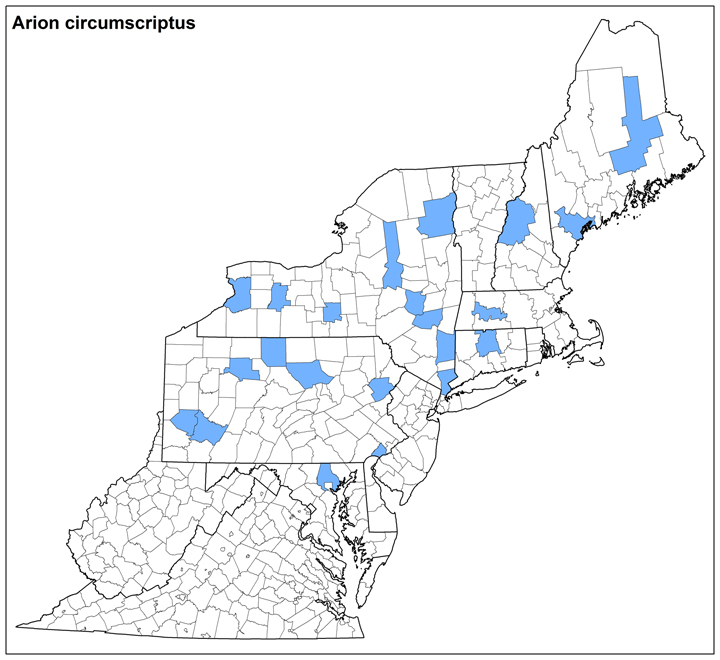Land Snails

Photo: Arion circumscriptus © Roy Anderson
Click photo to enlarge.
Arion circumscriptus Johnston, 1828 (non-native)
Family:Arionidae
Common name: Brown-banded Arion
Identification
Length: 30-40 mm
This species has dark gray or brown bodies with lighter sides, and dark longitudinal bands lie along the sides of the body and mantle (Kerney & Cameron, 1979). The mantle has little speckles of black. There is a slight keel to the tail. The sole is white sole, and the body mucus is clear. The body is bell-shaped in cross section when contracted (Kerney & Cameron, 1979).
Arion circumscriptus is darker than similar species A. fasciatus and A. silvaticus and has a much more pigmented epiphallus (Kerney & Cameron, 1979). (However, note that coloration is an unreliable character because it is affected by diet (Jordaens et al., 2001).) In contrast to A. silvaticus, A. circumscriptus has a long body, mantle spots, and a fuzzy lower edge to its longitudinal bands (Wiktor, 1983). Reproductive characters also distinguish the three species (see Grimm et al., 2009).
Ecology
Slugs prefer valleys, riversides, and lowland deciduous forests that provide moist, shady habitat (Wiktor 1996). Relatively intolerant of desiccation and high temperatures, A. circumscriptus tends to shelter in leaf litter, only emerging in response to rain and high moisture levels. Individuals feeds on live and decaying plants (Getz, 1959), and they can be a pest species of croplands and gardens (Grimm et al., 2009).
In Michigan, adults are present in the spring and summer, and they lay eggs in the late summer until hibernation. A. circumscriptus may live 2-3 years (Getz, 1959).
Taxonomy
Synonym is Arion bourguignati.
Distribution
Arion circumscriptus is originally Eurasian and was introduced to both the east and west coasts of the US and Canada. The species may be found across the northeastern US between Maine and Maryland. (Note that museum records may incorrectly classify this species as A. silvaticus or A. fasciatus [Grimm et al., 2009].)
Conservation
NatureServe Global Rank: G5, Apparently secure.
Megan Paustian 6/2017
Range Map (Click to Enlarge)


